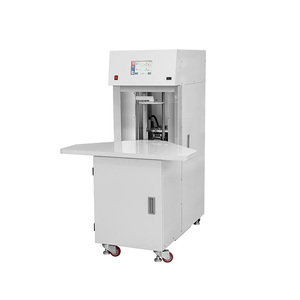(413 products available)











































































































































































































































As printing technology improves, the need for a paper card collating machine has grown. Businesses are now looking for ways to process their documents faster and more efficiently. The paper collator is a machine that can help with this. It is an automated device used to collate printed sheets of paper into sets in a specified order. Paper collators come in various types and are typically high-speed, delivering efficiency in finishing projects that require collating as one step among many others. Below are some of the most popular types of paper collators.
With the paper cards' sizes, the collating machines' speed and efficiency are also important specifications. They need to be adjusted according to the size and thickness of the collated paper cards. And the automation level and the final product quality requirement will also determine the kind of software or technology the machine uses.
Understanding the maintenance needs of a paper card collating machine is in addition to knowing its various specifications; it is crucial to ensure that the collating machine will work more effectively. Doing regular checks and calibrations on the collating machine will help ensure the accuracy of its collating and sorting functions. In this way, the paper cards will be neatly organized and the final product will be of a higher quality. Moreover, all of the machine's moving parts must be lubricated regularly to avoid any friction and wear. Please remember to clean the collating machine often to remove any dust, paper debris and ink residue that can build up and affect its performance and accuracy. The machine's electronic and digital systems must also be updated periodically to ensure they have the latest software. Also, establishing a proper operating practice protocol can help prevent accidental damage and misuse of the paper collating machine. The protocol includes training all operators on how to handle the machine properly. If possible, please consult the manufacturers of the paper collating machines for their specific maintenance instructions and guidelines. This is important for knowing the specific requirements of the machines. Following their maintenance advice will help extend the service life of the collating machine.
Workload:
Meet the expected workload. If they produce a significant number of cards monthly, it's more effective to select automatic collating machines. Automatic machines accelerate card assembly, addressing high-volume requirements while maintaining consistent output.
space constraints:
Consider available space. Collators, whether manual or automatic, need a considerable space. Automatic collators occupy more spaces. Ensure the working area has enough space before purchasing a collator.
Machine compatibility:
It's crucial that the collating machine works well with existing equipment, like printing and trimming machinery, to maintain a smooth production line. In addition, seamless integration of the collator helps to foster operational efficiency and eliminate production interruptions caused by incompatible devices.
Staffing needs:
Consider the number of employees on the task. Machines requiring staff supervision are more suitable for manual collators. While automatic collators run with less staff, self-operation is indispensable for smooth functioning amidst low workforce availability.
Machine repair:
Investigate the machine's service record. Frequent malfunction may demand repair costs that exceed the purchase price. Opt for well-maintained devices to lower long-term expenses and enable prompt, reliable repairs.
Q1: Is automation in collating cards important?
A1: Automation in a paper card collating machine is significant because it increases production efficiency, reduces labor costs, and improves the accuracy and outcomes of collating and sorting tasks.
Q2: What are the trends in card collating machines?
A2: The trend is towards automation, with machines having optical recognition for intelligent sorting; also, collating machines are now customizable to different card sizes and shapes, and there is greater machine–computer integration.
Q3: What is the difference between collating and sorting?
A3: Collating refers to assembling items in a specified order or sequence, while sorting refers to organizing items based on particular criteria or categories. A paper card collating machine is thus different from a paper card sorting machine.